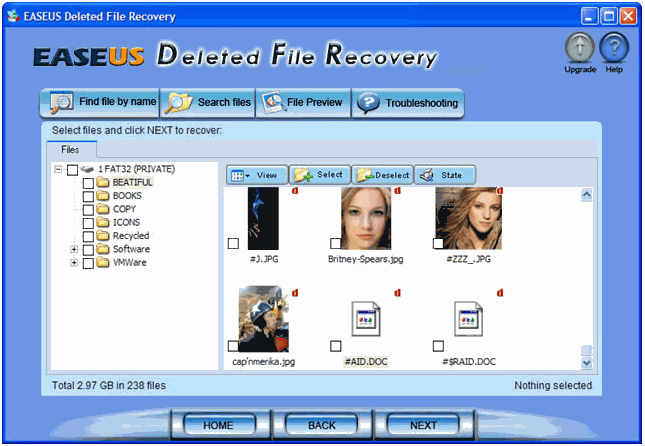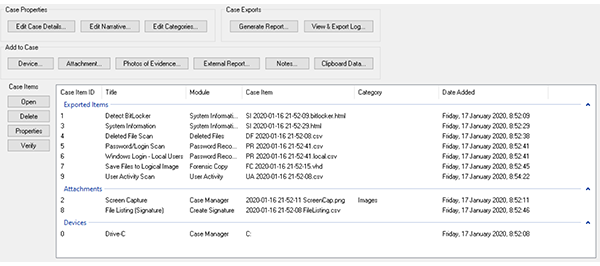

Allow OSFExtract to access your contacts.Allow OSFExtract to send and view SMS messages.The following permissions must be allowed for OSFExtract to access data on the device: If this is the first time the app is installed, when the app is started on the device, you will need to grant the requested permissions to allow the app to transfer the data.
Osforensics recover deleted files install#
With Extract Data with OSFExtract App selected, OSForensics will install and launch the OSFExtract app onto your device. Even with the Logical Image option, some files may be temporarily copied to a local temp directory before appearing in the VHD.Įnable (or disable) Post Imaging Options as desired. Create Logical Image will place the files within Virtual Hard Drive (.vhd). Copy to Folder will placed the files on a local directory on the system. Specify a destination target location to save the files that will be obtained from the device.
Osforensics recover deleted files android#
Enable Extract Data with OSFExtract App, which will use the companion OSFExtract App to retrieve additional data during the imaging process, and enable Logical Copy with Adb Pull to copy files/directories from an Android device to a destination folder using adb.exe pull command. The example below will show the use of Create Logical Android Image module in OSForensics.įrom the Android Device dropdown list, select your device. Enable USB debugging within Developer Options. Tap Build number 7 times and now the Developer Options menu should now be available in settings. On the Android Device: Go to the Settings App (On Android 8.0 or higher, select System), Near the bottom, go to the About phone option.

On Android 4.1 and lower, the Developer options screen is available by default in the settings menu, on Android 4.2 and higher it is hidden. OSForensics leverages the use of Android Debug Bridge (adb) application provided by Google to interface with the Android device.


On your Android Deviceīefore we begin, make sure your Android Device is placed in Debug Mode and is connected to your computer via USB. This will install the OSFExtract app onto the Android device and allow the retrieval of Messages (SMS, MMS), Contacts and Call Log from the device, that may not been retrievable using the Logical Copy method. Files are obtained using adb.exe ‘pull’ command with the '-a' option which will try to preserve file timestamp and mode.Īdditional artifacts can be retrieved using the Extract Data with OSFExtract App option. Note that while the directory structure, file contents, and some metadata are preserved, some data may be lost from the operation such as slack space, fragmentation, unallocated space, deleted files, etc. This is useful for cases where obtaining a complete drive image of the evidence device is not possible (e.g. Starting with OSForensics V6.1, OSForensics includes support for creating a logical device image and the extraction of text messages, call logs and contact details from an Android device.Ĭreating a logical Android image allows the investigator to copy files/directories from an Android device to a destination folder or logical image file (.vhd), preserving as much file system metadata (e.g.


 0 kommentar(er)
0 kommentar(er)
